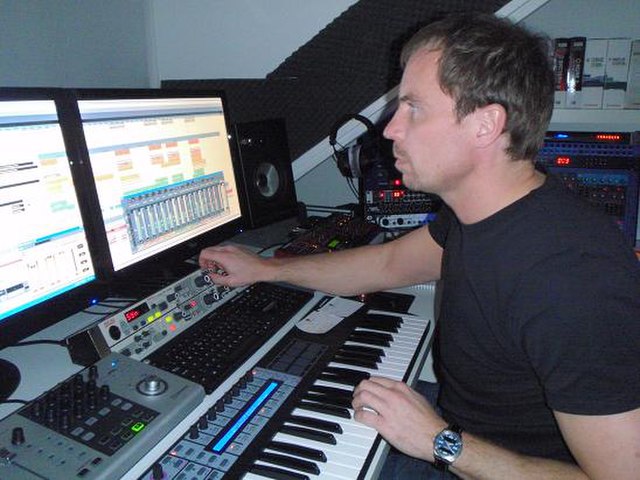History of sound recording
The history of sound recording - which has progressed in waves, driven by the invention and commercial introduction of new technologies — can be roughly divided into four main periods:The Acoustic era (1877–1925)
The Electrical era (1925–1945)
The Magnetic era (1945–1975)
The Digital era (1975–present)
Edward Elgar and Beatrice Harrison during recording sessions for his Cello Concerto in 1920. Note the recording horns placed before soloist and orchestra
Ring-and-spring microphones, such as this Western Electric microphone, were common during the electrical age of sound recording c. 1925–45.
During the magnetic era, sound recordings were usually made on magnetic tape before being transferred to other media.
In the digital era, audio recording becomes increasingly dominated by digital audio workstations (DAW).
The phonautograph is the earliest known device for recording sound. Previously, tracings had been obtained of the sound-producing vibratory motions of tuning forks and other objects by physical contact with them, but not of actual sound waves as they propagated through air or other mediums. Invented by Frenchman Édouard-Léon Scott de Martinville, it was patented on March 25, 1857. It transcribed sound waves as undulations or other deviations in a line traced on smoke-blackened paper or glass. Scott believed that future technology would allow the traces to be deciphered as a kind of "natural stenography". Intended as a laboratory instrument for the study of acoustics, it was used to visually study and measure the amplitude envelopes and waveforms of speech and other sounds, or to determine the frequency of a given musical pitch by comparison with a simultaneously recorded reference frequency.
An early phonautograph (1859). The barre, for receiving sound, is made of plaster of paris.





